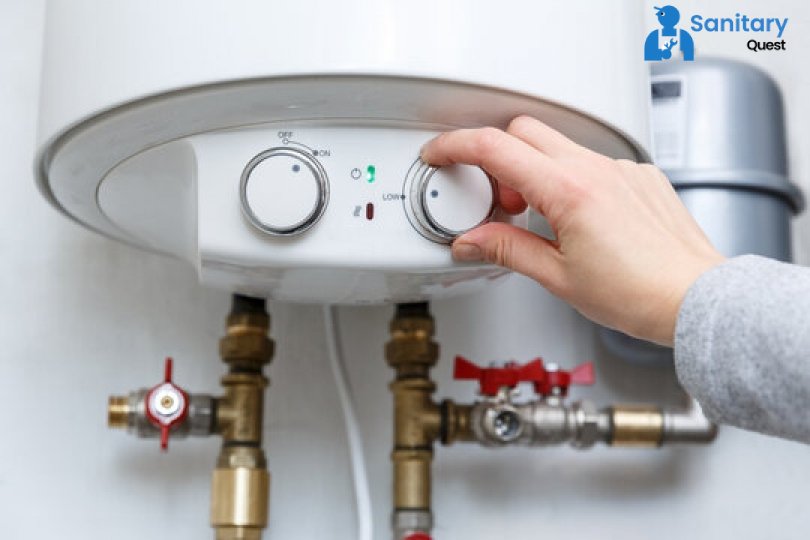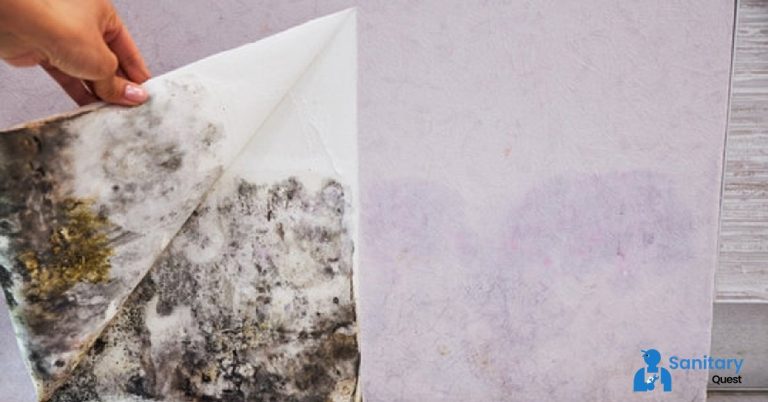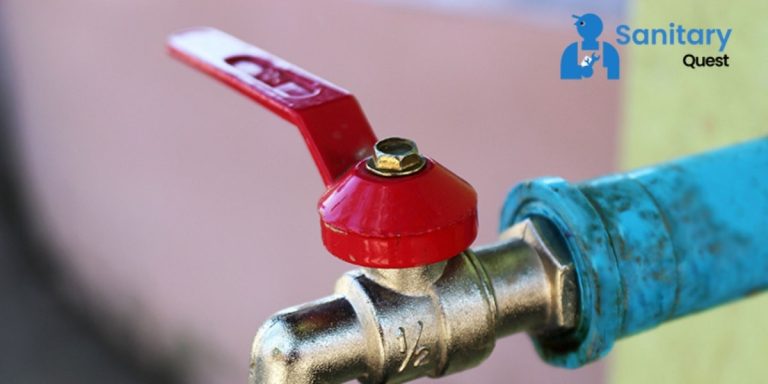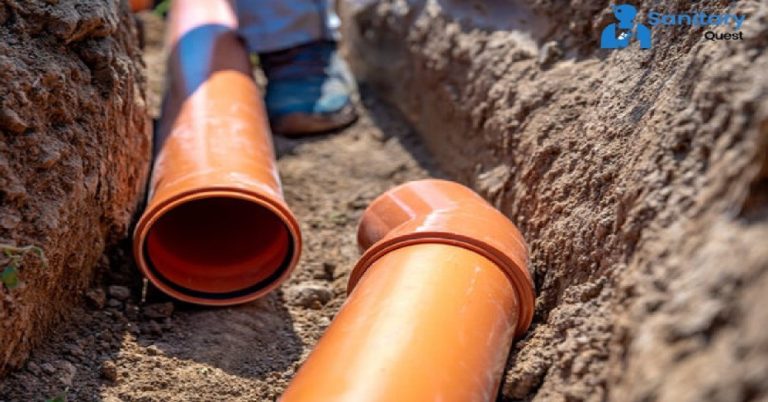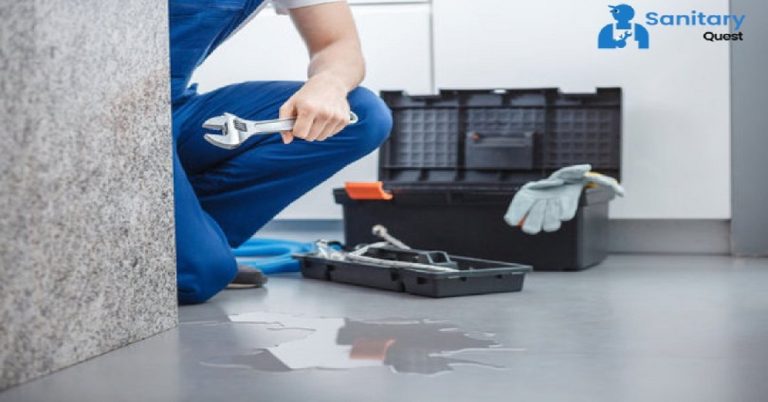5 Easy Steps For DIY Water Heater Thermostat Repair
Fixing a malfunctioning water heater thermostat is a problem that requires little effort. To fix the thermostat on your water heater yourself, just follow these easy procedures, and remember to always switch off the power at the main breakers before beginning any kind of operation that involves electricity. Get in touch with our staff as soon as possible to eliminate each and every risk completely.
It is highly recommended that you seek the assistance of a professional if you do not feel confident dealing with live wires or plumbing that contain pressurized water. Sanitary Quest will never put anything else before ensuring that you are happy. Get in touch with us if you’re having problems with the thermostat on your water heater.
When Should You Repair Your Water Heater Thermostat?
If you’ve noticed that the water that comes out of your faucet isn’t as hot as it used to be, you should check the thermostat to see if there’s an issue with it. If the thermostat on your water heater breaks, you could end up with much higher electricity bills due to the persistent use of a heating mechanism that is not very efficient. Because of this, the lifespan of the device is shortened; thus, you should check on it at the first sign of any problems.
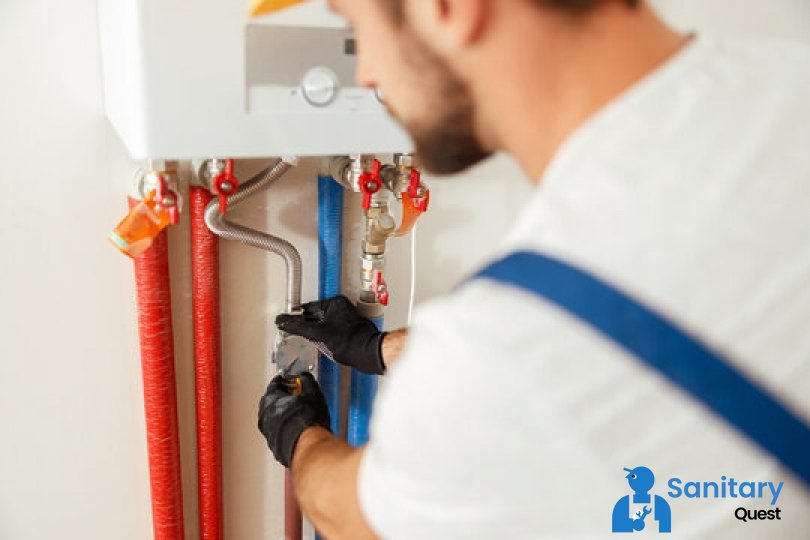
Your Water is Too Hot
There is a temperature and pressure release valve located on your water heater. In the event that there is a problem with the system, this safety mechanism will allow the boiler to safely expel any gases that have built up inside of it. Over time, silt can build up in the valves, leading them to become stuck or to remain closed. This can happen at any time. This can result in a significant buildup of pressure within the steam system, which invariably triggers an explosion of boiling water and scalding steam. Because the valve is probably jammed open, the temperature of the water that you use could be gradually increasing as it travels through the system. This is something that calls for the expertise of a trained repairman.
There’s Not Enough Hot Water
When you initially turn on the circuit breaker before turning on your hot water faucet, the electric current flows through two wires and completes a circuit to the heating mechanism of the water heater. This happens before you turn on your hot water faucet. If the thermostat is unable to detect that the room temperature has reached the desired level, then electricity will not flow through the wires, and there will be no production of heat.
Water Takes Too Long to Reheat
If you turn on the hot water in the shower and it doesn’t get hot within a few seconds, the reason for this is probably because the thermostat isn’t allowing power to go through to the mechanism that does the heating. It will take far longer than usual to reheat the water because there is no heat.
A Step-by-Step Guide to Repair a Water Heater Thermostat
Turn Off Power at Main Breakers
- Take off the lid of the thermostat and set it down somewhere safe.
- Remove the wires from the thermostat by unscrewing or unclipping them, being careful not to pull them by the wire coating, which is quite thin. If you are unable to extract them with your fingers, you will need to use a set of needle-nose pliers or tweezers instead.
- Before you begin working on the heater, make sure that you turn off the power at the circuit breakers in your home. This will prevent any electricity from reaching the heater while you are making repairs.
How to Fix a Water Heater Thermostat in 5 Steps
- Locate the top thermostat as well as the lower thermostat.
- Verify that they have a power supply.
- To determine if the broken thermostat can be fixed, press the button to do a factory reset on it.
- If the higher system does not have power, the thermostat should be replaced.
- If the higher system has power but you do not have hot water, you need to replace the upper heating element. This is the case even if you have a working upper system.
Replace The Faulty Thermostat
- Unscrew the malfunctioning thermostat by hand or, if necessary, use a pair of pliers to do it.
- Take this malfunctioning thermostat to a hardware store, home centre, or plumber’s wholesaler to get it repaired. At these stores, you can choose from a wide selection of water heater thermostats that are designed to be compatible with your particular device.
- Screw the replacement thermostat into place using your fingers, wrenches, or pliers, precisely as you did when you removed the old, malfunctioning thermostat.
- Reconnect the wires to the thermostat in the same spot as you removed them in the first step. Be careful to attach them securely so that when you switch the power back on it will be possible for the energy to travel through the system and complete the circuit.
Turn Power Back On at Breakers
- After you have ensured that the new thermostat is operational by testing it, you can turn the electricity back on in your home.
- After the water heater has finished heating up, adjust the temperature setting on the thermostat by allowing a little amount of hot water to run from a tap for a few seconds.
- Look for sources of hot water in all areas of your home. If you have performed the procedures in the right order, the hot water should have returned to its original temperature.
The Steps You Shouldn’t Take
- When the power is on, you should not touch any of the wires in any way. When not handled properly, electricity poses a lethal risk and can even be fatal.
- Never mix parts from different water heater thermostats; doing so could cause damage to your unit and perhaps put your safety in jeopardy.
- If the thermostat on your water heater is broken and you are unclear whether or not you are capable of fixing it yourself, you should consider hiring a professional who is equipped with the necessary tools and has the experience necessary to finish the task in a secure manner.
When to Repair or Replace A Water Heater Thermostat
Thermostat Leaks, Hazards Can Arise
In the event that the thermostat on your water heater is leaking, you should not attempt to fix it on your own. A leaking unit can result in a number of major safety issues, all of which should be dealt with by a skilled specialist only.
Leaks in water heaters present a major risk of electrocution to anyone who is in the immediate area of the unit while it is being powered on. Additionally, water heater leaks can cause damage to the floors and walls of the building.
If you smell gas near your water heater, you should immediately turn off any and all appliances that are connected to the device. Get in touch with Sanitary Quest as soon as possible if there is any kind of leak coming from your faulty water heater thermostat. We will replace or repair it for you as soon as feasible.

